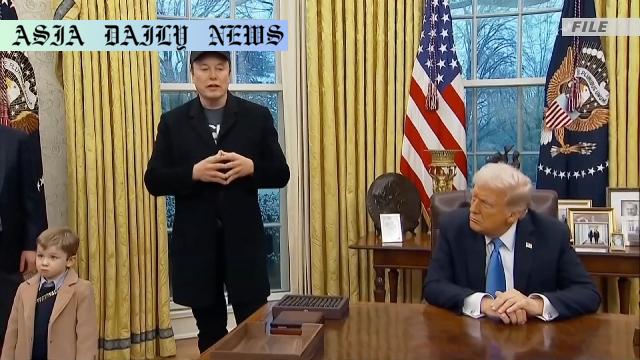Musk was empowered to make recommendations to the departments but not to issue unilateral decisions on staffing and policy.
Trump restricts Musk’s authority over federal workforce changes.
Musk acknowledges DOGE’s missteps in handling staffing policies.
Cabinet retains decision-making power; Musk has advisory capacity.

Trump Limits Musk’s Role in Federal Workforce Decisions
In a recent development revealed by a US political news outlet, President Donald Trump has reportedly curtailed the powers of tech magnate Elon Musk in directing and determining staffing reforms across federal departments and agencies. Musk, who was appointed to lead the Department of Government Efficiency (DOGE), originally had significant influence in reductive workforce measures and budget adjustments within the government structure. However, recent meetings suggest a recalibration of his authority.
During a key cabinet meeting that included Musk, Trump clarified the boundaries of his engagement, emphasizing that Musk holds the right to propose staffing reforms but not to independently implement them. The president highlighted the importance of maintaining a functioning workforce and requested his Cabinet members to ensure “good people” stay in their respective positions. This shift can be interpreted as a conciliatory measure to minimize tensions among government officials, some of whom reportedly found Musk’s mode of management concerning.
Reported Missteps Highlight DOGE’s Growing Pains
Reports indicate that Musk acknowledged errors made under DOGE’s guidance, possibly indicating over-zealous changes or a lack of alignment with the cultural and operational frameworks of established federal agencies. Trump’s decision to retain direct oversight on these processes suggests a pragmatic approach, balancing innovation with responsibility. The remarks, such as “if the Cabinet doesn’t cut, Elon will,” reflect the president’s belief in Musk’s efficiency but also underscore the need for harmony and retention of qualified personnel within the government infrastructure.
The Cabinet’s Role: Balancing Leadership and Efficiency
Cabinet members remain central players in determining the trajectory of federal workforce reforms. By placing clear boundaries on Musk’s role, Trump has reinforced the autonomy and importance of Cabinet decisions. Observers suggest this move may help alleviate any growing resentment or apprehension among officials regarding Musk’s unconventional methods. The biweekly meetings announced by the president signal serious attention to administrative processes and are expected to create a channel for cohesive discussions moving forward.
Addressing Public Perception and Administrative Integrity
Overall, this development may be viewed as a strategic compromise designed to protect the integrity of federal staffing while harnessing Musk’s visionary approach in areas where it aligns with the larger governmental ecosystem. Public opinion remains divided, with some lauding Musk’s no-nonsense efficiency and others advocating for a more traditional and balanced approach to policy-making. Nevertheless, this change in Musk’s responsibility reveals Trump’s ongoing effort to maintain stability within his administration while addressing inefficiencies through structured measures and external expertise.



Commentary
Balancing Efficiency and Stability
The decision to limit Elon Musk’s authority in managing the federal workforce appears prudent on President Trump’s part. It represents a considered effort to leverage Musk’s innovative perspective while preserving the foundational stability of federal institutions. Musk’s unorthodox methods and business-driven mindset have introduced much-needed urgency to government reforms, but this approach must align with public administrative protocols—a balance that may have been overlooked at times.
Innovation Versus Tradition
One cannot deny the boundary-pushing nature of Musk’s leadership style. DOGE’s establishment inherently seeks to disrupt conventional systems and remodel governance to reflect technological efficiency and reduced bureaucracy. However, federal governance involves more delicate nuances than corporate structures, and blind cuts or extreme measures can have significant ramifications for public services. The alignment between Musk’s vision and the government’s purpose is critical for long-term efficacy.
Prioritizing Collaborative Decision-making
The restoration of decision-making authority to Trump’s Cabinet resonates with traditional checks and balances essential in a democracy. This move might not only enhance job security for federal workers but could make Musk’s proposals more palatable and collaboratively refined via Cabinet discussions. Trump’s biweekly meetings initiative exemplifies a structured monitoring system that could result in measurable and sustainable improvements to administrative efficiency.
Future Implications
While the notion of Musk spearheading transformative government projects sparked public curiosity, this recalibration serves as a reminder that government and enterprise are fundamentally different entities. With Musk’s advisory role now defined within boundaries, the focus returns to collaborative problem-solving—an approach that benefits taxpayers and ensures smoother, transparent governance. How this partnership evolves further remains to be seen, but the emphasis on mutual accountability is a step in the right direction.